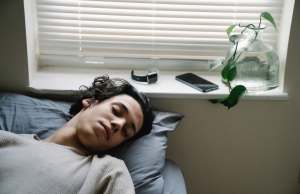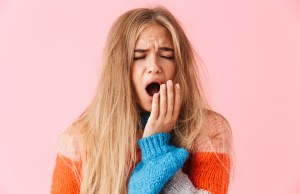- In the fall and winter, we’re especially vulnerable to a form of depression called seasonal affective disorder (SAD) or winter depression, which is related to shorter days and a lack of sunlight.
- Fortunately, there are several effective treatments for SAD including light therapy, antidepressants, talk therapy, and self-care.
- With light therapy, you are exposed to a bright light (which mimics natural light) from a special light box; this affects your brain chemicals and results in a mood boost.
- Antidepressants also prove effective in treating SAD; you’ll likely begin taking your medication before your symptoms typically begin and continue taking it past when your symptoms typically end to ensure success.
- In talk therapy, your counselor can help you identify and manage any problematic thoughts, feelings, or behaviors that might be related to your SAD.
- Finally, self-care can also help you battle winter depression: a few beneficial activities include exercising, socializing, and curling up with a good book.
As the days get shorter and we don’t get as much sunlight, some of us can develop a condition called seasonal affective disorder, also known as SAD. SAD has several symptoms and some of them are so subtle that you may not even know that you suffer from SAD, such as:
- Constant fatigue
- Sadness
- Carb cravings
- Overeating
- Withdrawing from others
- Frustration and irritability
- Lack of energy
- Body aches and pain
There’s bad news and there’s good news when it comes to SAD. The bad news is that, for many, it’s an annual event—SAD moves in every winter. The good news, however, is that we can effectively treat SAD each year. Here are the most effective treatment methods:
Light Therapy
A big problem in the winter months is that we don’t spend as much time in the sun. This is thought to be a major factor in the development of SAD, which makes light therapy an especially important and beneficial treatment method. In light therapy, you sit near a special light box, which exposes you to a bright light (meant to mimic the sun) first thing in the morning. This results in a change in brain chemicals, which improves your mood.
You’ll typically notice results within a few days to a few weeks and experience little to no side effects. While research into light therapy is minimal, it appears to be particularly effective in the treatment of SAD. To begin light therapy, first talk to a doctor about whether it’s right for you. They’ll help you to find the best light box for you, as well as determine how and when you should use your light box.
Antidepressants
Another effective treatment for SAD is antidepressants, especially if you’re experiencing severe symptoms, like suicidal thoughts. Because SAD comes and goes with the seasons (typically beginning in the fall and dissolving in the spring), your doctor may recommend you take your medication before your symptoms usually set in. Similarly, they may recommend you continue taking your medication past when your symptoms usually go away, to ensure you’re protected against your SAD. Like light therapy, with antidepressants it could take a few weeks before you notice results. Additionally, it might take some experimenting to find the right antidepressant for you.
Talk Therapy
Talk therapy also proves beneficial to those suffering from SAD or winter depression. This form of therapy focuses on a collaborative client-counselor relationship, in which the therapist helps you to open up about any problematic thoughts, feelings, and behaviors. These might be related to feeling down in the winter or after the hustle and bustle of the holidays. In any case, a counselor can help you to identify any problems, manage stress, and ultimately learn how to cope with SAD.
Self-Care
All of us can benefit from prioritizing a little bit of self-care every day. Self-care is any activity that benefits your health and wellbeing. These activities are typically rooted in improving your physical, emotional, spiritual, or social self. A few examples include:
- Journaling
- Meditation
- Exercise
- Cooking with a friend
- Reading a book
- Taking a bubble bath
- Dancing
- Knitting
Self-care can look different for different people, but it’s basically all about doing what feels good for you and brings joy to your life. A lot of us struggle to have fun and find motivation in the winter months, but engaging in self-care each day can prove super effective if you’re experiencing symptoms of SAD. Try braving the cold and spend some time exercising in the sun; or, if you refuse to go outside, pick up a good back or invite a friend over for dinner. Do whatever feels rewarding to you this winter.













